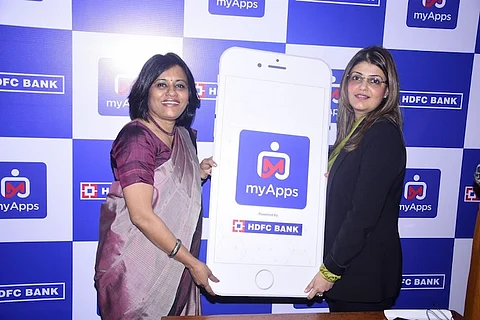

After launching its own version of an e-commerce festive sale, HDFC Bank is moving beyond traditional banking services to become a digital platform that can offer you a range of services. And the latest is the suite of white-label apps called ‘myApps’.
myApps is a suite of apps that will enable urban local bodies including Smart cities and municipalities, housing societies, clubs or gymkhanas and even religious institutions, to completely digitise their ecosystem. Using these apps, such organisations can get customers to make reservations, make payments, pay property tax, among others. HDFC Bank says that the bank will completely customise the app for each non-individual organisation it onboards.
This is HDFC Bank’s attempt at tapping the non-individual banking segment with varied offerings and part of the bank’s strategy to take digitisation to the next level by focusing on providing value beyond basic banking services and tapping into the B2-B2-C space.
“All the four segments which we spoke about are the non-individual segments. For individual segments, you have a large number of product suite assets such as credit cards, investments etc. Now for a non-individual suite, which impacts our daily lives as users, what is that you need to do to penetrate into this segment? You have to offer value-added services,” says Smita Bhagat, Country Head, Government & Institutional Business, Start-ups and E-Commerce, HDFC Bank.
Organisations such as urban local bodies, religious institutions have a large number of users and deal with a large amount of money. And this is what HDFC Bank is looking to tap by addressing those pain points, Smita says.
These apps will have the organisation’s own branding and content. Members can make payments for utilities and fees, make online bookings for various facilities, stay updated on latest announcements, and utilise a host of other features offered by the institutions.
“The organisation also gets easy access to reports on payments, facilities booked by members, requests and complaints registered. They can also use the app to broadcast notices and engage with members on various events,” HDFC Bank said in a statement.
According to HDFC, the opportunity is huge: 30 lakh places of worship, according to the 2011 Census; 6-8 lakh housing societies; 2,000+ clubs; and 500+ cities with a population of more than 1 lakh.
These organisations will have to open an account with HDFC Bank to be able to offer such an app to its members. This way, Smita says, the bank will be able to grow its liability book big time.
“We will be able to do a lot of analysis, etc. and provide them other value-added services. So today most of these institutions just do plain vanilla banking through savings account or FD. These have traditionally been with cooperative or nationalised banks. By doing this, we will be able to help them do more and offer more to its members. It's a win-win situation. I get to keep my wallet share and they provide convenience to their members,” Smita says, adding that it will also give the bank the opportunity to be able to do cross-selling of more of its offerings.
HDFC Bank will create these apps for the organisation and completely customise it based on each organisation's requirements. However, the bank claims that all of the user data will be hosted on the institution’s server, which the bank will facilitate to ensure complete data privacy and security.